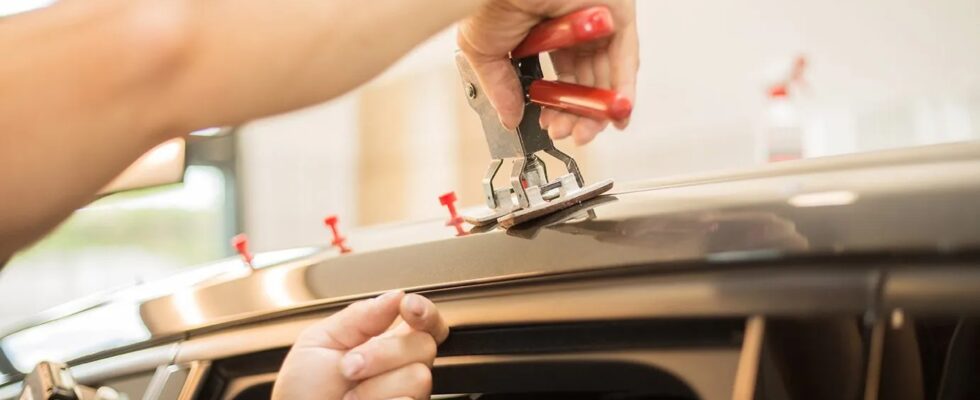In the wake of a hailstorm, vehicle owners often find themselves grappling with the sudden appearance of dents and dings across the body of their cars. Traditional methods of repairing such damage can be time-consuming and costly, involving body fillers, sanding, and repainting. However, there is an efficient, cost-effective solution that has gained significant traction in recent years – Paintless Dent Repair (PDR).
PDR is a technique that involves the careful manipulation of the vehicle’s body panels to restore them to their original state, without the need for additional materials or painting. This innovative approach to dent repair has several distinct advantages, particularly when it comes to repairing hail damage.
Firstly, PDR is kinder to your car’s original finish. Traditional methods require the damaged panel to be filled and repainted, which can often lead to a mismatch with the vehicle’s original color, especially if the car is older and the paint has faded over time. In contrast, PDR maintains the original factory finish, preserving the integrity and value of the vehicle.
Another significant advantage of PDR is its cost-effectiveness. Traditional body shop repairs can be expensive, mainly due to the labor and materials required for filling, sanding, and repainting. PDR requires fewer materials and less labor, which often results in lower costs. Additionally, some insurance companies may cover the cost of PDR, recognizing it as a cost-effective and reliable method of repair.
Time efficiency is another factor that gives PDR an edge over conventional methods. Traditional repair work can take several days or even weeks, depending on the extent of the damage and the workload of the shop. PDR, on the other hand, can often be completed in a matter of hours, returning your vehicle to you more quickly and minimizing inconvenience.
Moreover, PDR is an environmentally friendly option. Traditional repair methods involve chemicals from body fillers, paint, and solvents, which can be harmful to the environment. PDR does not use these materials, making it a more sustainable choice.
Despite these benefits, it’s important to note that PDR requires a high degree of skill and expertise. Technicians need specialized training to use the tools effectively and to ensure that the vehicle’s metal is manipulated without causing further damage or altering the original paint. In the hands of a skilled technician, PDR can restore the look of a hail-damaged vehicle without leaving a trace of the original damage.
In summary, PDR is an excellent option for repairing hail damage due to its preservation of the vehicle’s original finish, cost-effectiveness, time efficiency, and environmental friendliness. It’s a modern solution that addresses the pain points of traditional repair methods, making it a preferred choice for many vehicle owners and insurance companies alike.
While PDR may not be suitable for all types of damage, such as large dents or cases where the paint has been broken or scratched, its benefits make it an attractive solution for hail damage repair. As a vehicle owner, it’s essential to evaluate your options and choose the best method to restore your car to its pre-damage condition, and in many cases, PDR will be the optimal choice.


